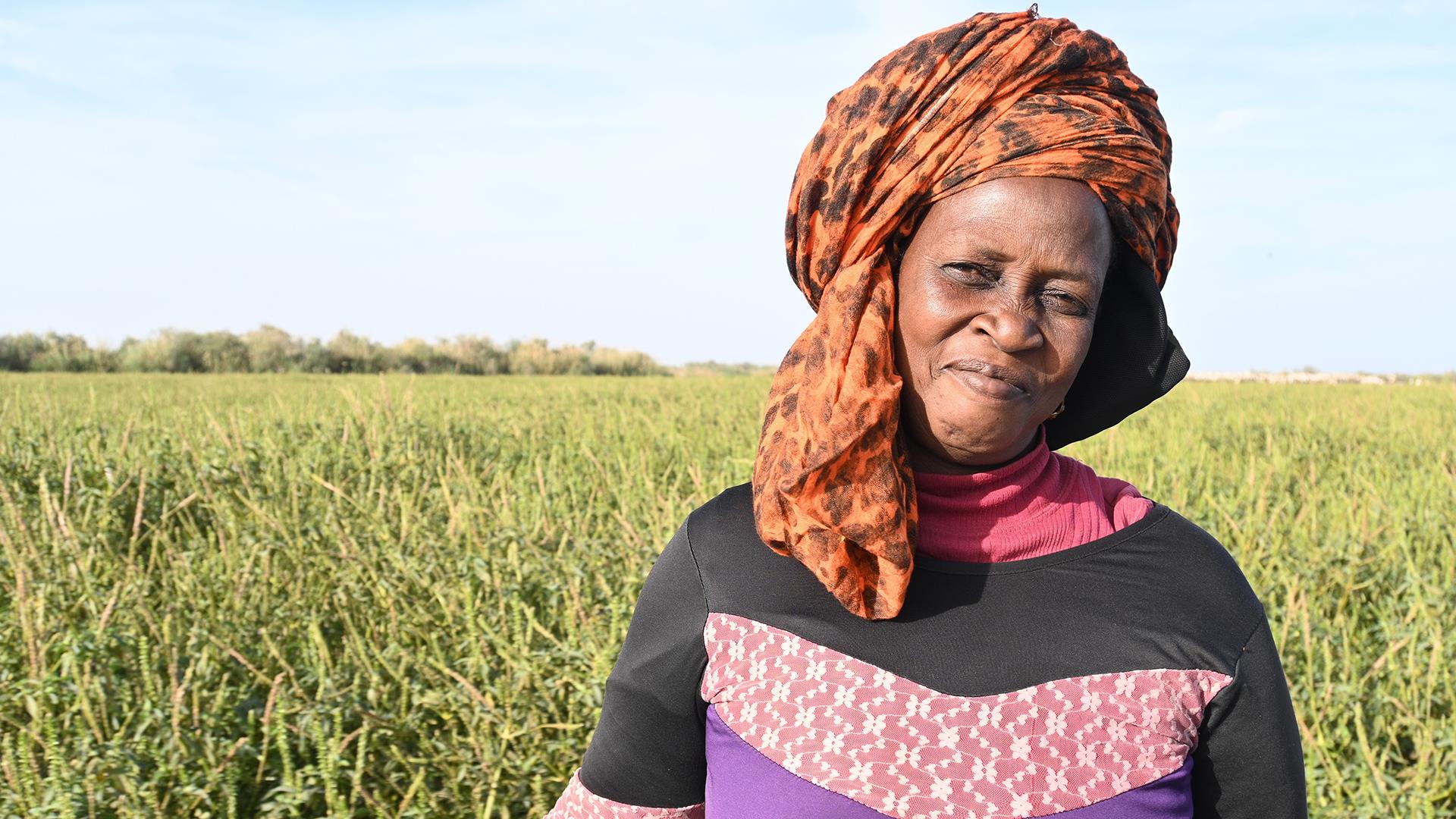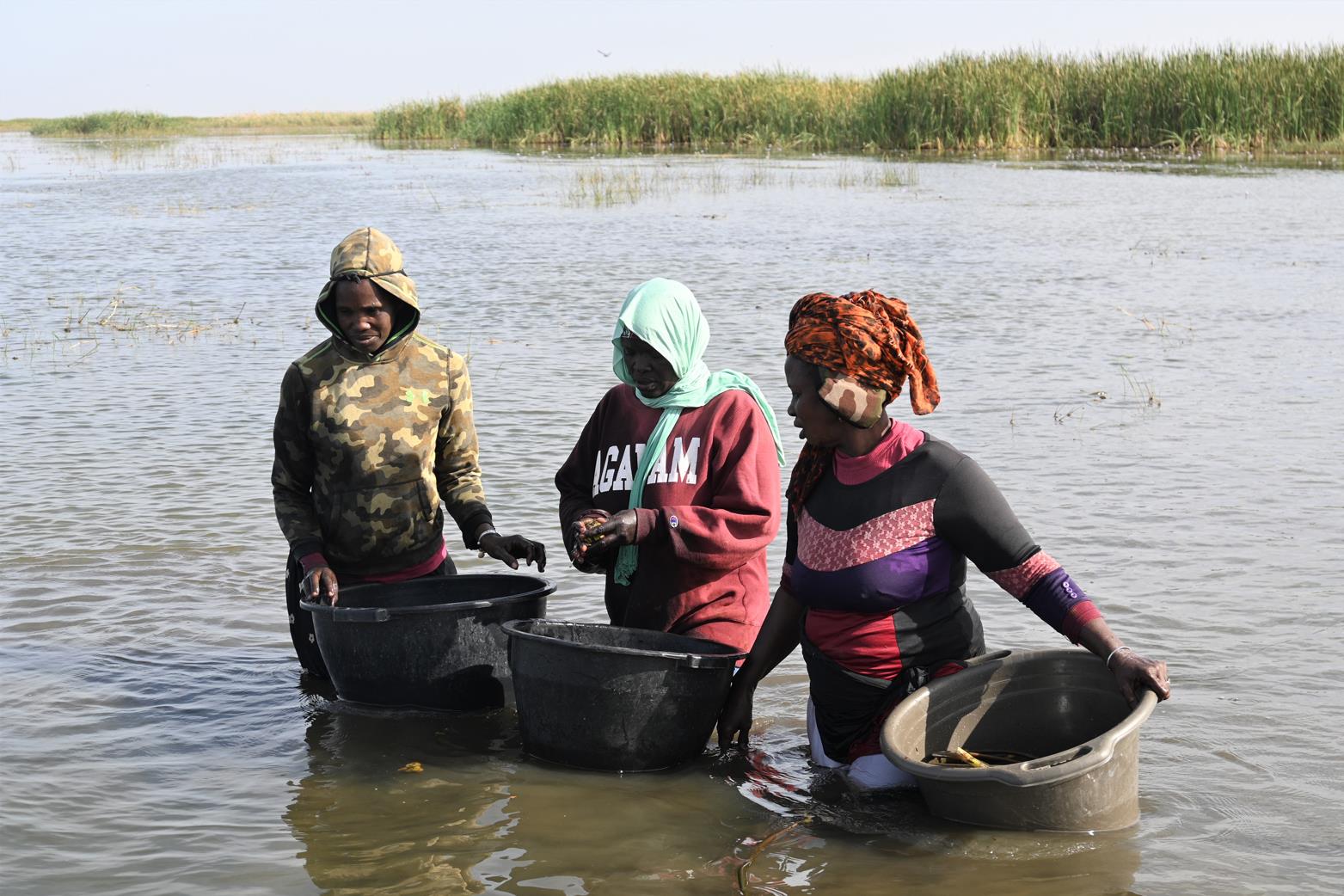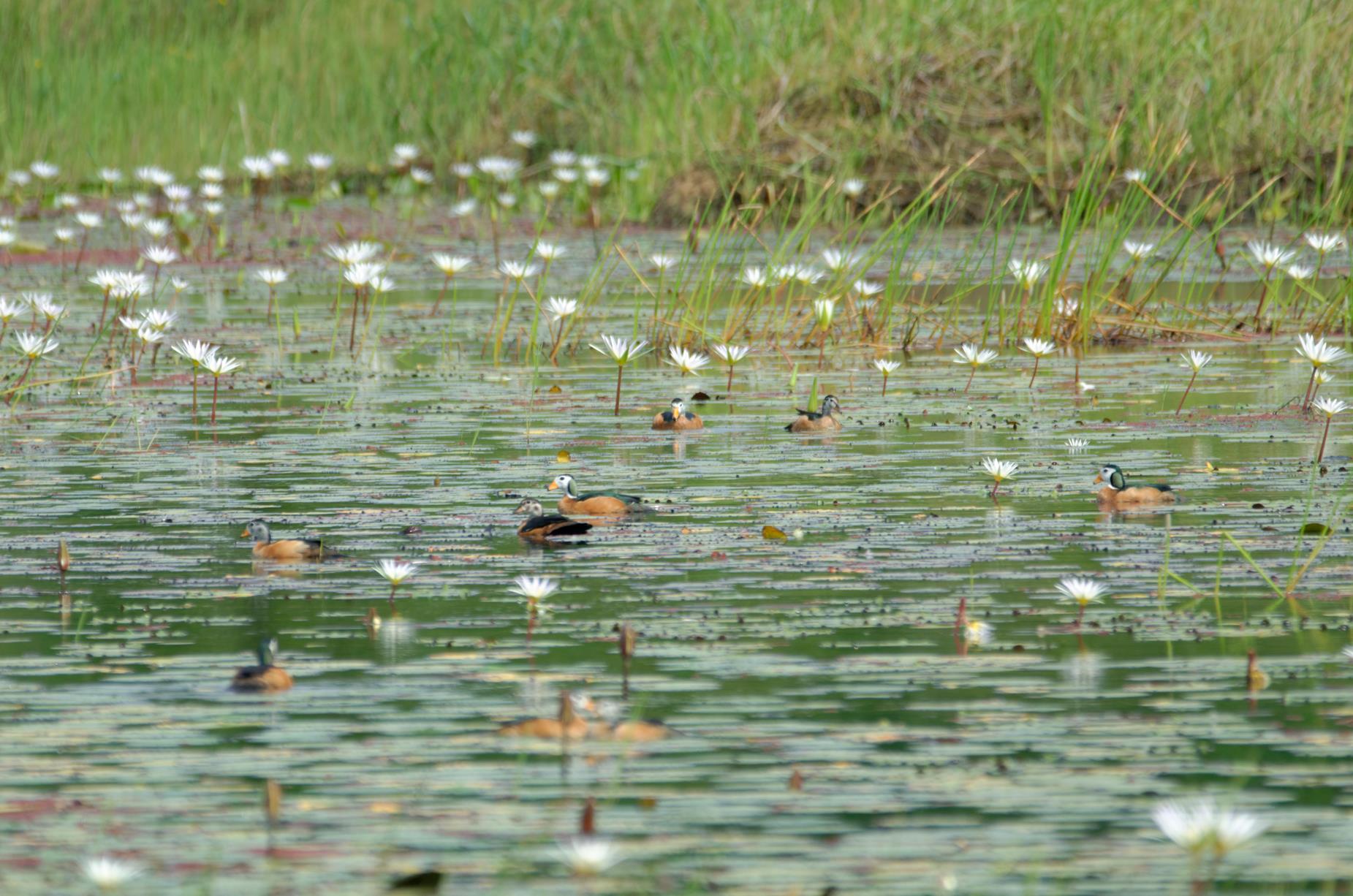
Bringing water lilies back into nature and back to the Senegalese cuisine
FAO is boosting biodiversity to ensure healthier ecosystems and healthier diets
Maia Diagne and her community are working to revive the traditional cultivation of white water lilies with the help of the FAO-led RESSOURCE Project, the Sahelian wetlands site of the Sustainable Wildlife Management Programme. ©FAO/Cindy Côté-Andreetti
18/11/2022
Maia Diagne’s eyes fill with emotion as she describes the lifelong bond she feels with the water lilies that grew in large quantities in her part of Senegal. "I was born in the middle of the water lilies, in a pirogue [a small boat] while my mother was on her way to the Djoudj National Bird Park to harvest them."
So it’s little wonder that Maia cooks thieboudienne, the national dish of Senegal, in a sauce rich with vegetables and uses white water lily (Nymphaea lotus) seeds instead of the rice usually used in this recipe. She and her community are working to revive these culinary traditions with the help of the RESSOURCE* Project, the Sahelian wetlands site of the Sustainable Wildlife Management (SWM) Programme, implemented by FAO and a consortium of partners.
Grown in natural wetlands by the local community, water lilies are organically farmed without the use of fertilisers or pesticides. Their seeds can be used in many dishes, such as thieboudienne, or made into a nutritious flour, used to prepare fritters, small cakes or delicious pancakes.
"In the past, all the women in the village would go to the delta to collect water lilies. This plant was a staple food for the whole population, and it was traditionally used for its therapeutic qualities," says Maia.
Here, just as in many other rural areas around the world, wild plants contribute to the quality of the diet, provide essential nutrients and are important sources of income for one in five people, particularly women and children. But wetland degradation and the spread of invasive aquatic plants have made the resource scarce, and the rising cost of fuel to get to the areas has made it difficult for communities to access the water lilies.


The project has helped Maia and her community regain access to water lilies, boosting biodiversity in the area and revitalizing traditional diets. ©FAO/Cindy Côté-Andreetti
Now, she and her fellow villagers are once again harvesting the wild plant which Maia’s ancestors, the Waalo-Waalo people of the Senegal River Delta, believe can help in the prevention of diabetes and the treatment of various ailments such as headaches or stomach pain.
The water lilies used to be abundant in the wetlands of the region. "Nowadays, they are hardly eaten at all," says Maia. Over the years, intensive rice cultivation has replaced the natural wetlands rich in water lilies. "Since rice has replaced water lily seeds in our diet, I get sick more often than before," she says with concern.
By working to rehabilitate rice fields that have become too unproductive and therefore abandoned, the RESSOURCE Project aims to restore these ecosystems and turn them back into ponds suitable for water lily cultivation. This would benefit both local populations and the numerous species of water birds, which are fond of these aquatic plants.
The RESSOURCE Project is part of the SWM Programme, an initiative of the Organisation of African, Caribbean and Pacific States, funded by the European Union and co-financed by the French Facility for Global Environment and the French Development Agency. It is implemented by a consortium of partners which includes FAO, the French Agricultural Research Centre for International Development, the Center for International Forestry Research and the Wildlife Conservation Society.
In Senegal, the project has been working with communities, authorities and technical partners since 2017 to address these challenges. Its central aim is to find a way of reconciling local development and biodiversity conservation.

Restoring the water lilies benefits both local communities and the broader ecosystem of wetlands, as numerous species of aquatic birds feed on them. ©Bruno Portier
It’s an effort which according to Maia, has already borne fruit. "Access to water lilies is becoming easier for us," she says. "Before, we didn't sell the water lily. It was only harvested for consumption. Now, water lilies not only nourish and heal, but they also sell very well," she continues. Thanks to the project's involvement in the region, a kilogram of water lilies has risen from USD 3 to 7.5 (2 000 to 5 000 Senegalese francs) in one year.
This increase in demand and selling price is welcome news for the rural women involved in the initiative, who see their traditional techniques contributing more to the family income.
"As I was born into the water lily harvest, I would like my children to be able to enjoy it too. For my children and grandchildren, I would like a local market so that they can sell this wild plant," she concludes.
Maia wants to include women from other villages, rice producers and restaurant owners in this initiative. This is exactly the kind of broadening out of the initiative that the RESSOURCE Project is eager to support.
FAO’s involvement through the RESSOURCE Project represents an important example of its work to conserve biodiversity. “The success and impacts of this project in improving local communities’ diet shows how significant it is to bring back some of the ancestral wisdom and variety to diets which have been lost due to the alarming reduction in the number of crops cultivated throughout the world,” says Bruno Portier, RESSOURCE Project Coordinator for FAO.
*RESSOURCE stands for "Strengthening expertise in the South of the Sahara on birds and their rational use for the benefit of communities and their environment".
Embed video:Related links
Learn more
- Website: Sustainable Wildlife Management (SWM) Programme
- Website: RESSOURCE Project: Sahelian Wetlands Site
- Video: Senegalese recipe: Thiéboudienne with water lily seeds (Available only in French)
- Website: FAO and EU Partnership

